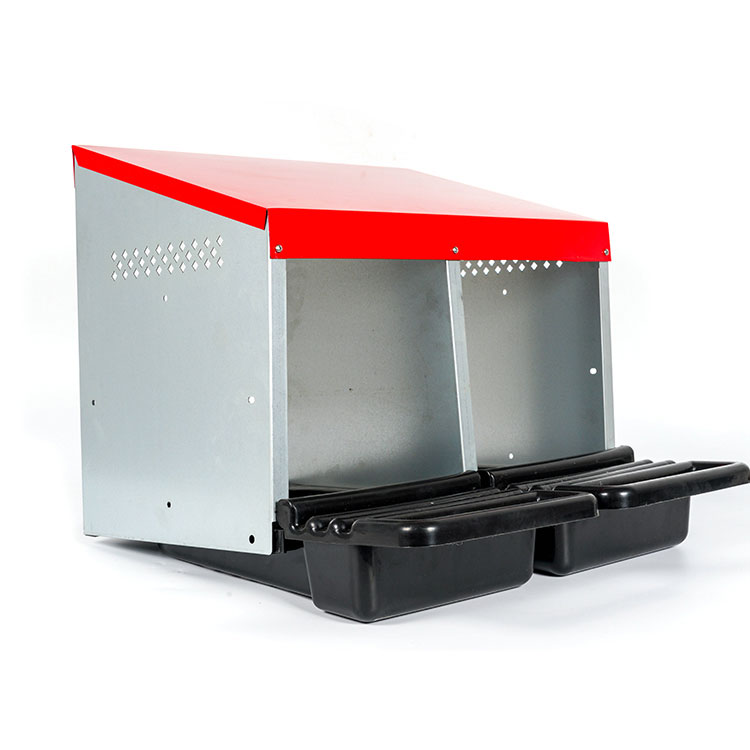Functionalities of Chicken Nesting Boxes
2023-10-16
Chicken nesting boxes are essential components of a chicken coop or poultry house where hens can lay eggs comfortably and securely. The design and functionality of nesting boxes contribute to the well-being of the chickens and the successful collection of eggs. Here are the main functionalities of chicken nesting boxes:
1. Egg Collection: The primary purpose of nesting boxes is to provide a designated and clean area for hens to lay their eggs. Properly designed nesting boxes make it easier for chicken keepers to locate and collect eggs without disturbing the hens.
2. Comfort and Privacy: Nesting boxes offer hens a secluded and comfortable space where they can lay their eggs in a quiet and undisturbed environment. Chickens naturally seek out private and sheltered areas for egg-laying, and nesting boxes provide this essential comfort.
3. Egg Protection: Nesting boxes help protect freshly laid eggs from being accidentally stepped on, broken, or soiled by other chickens in the coop. The enclosed space minimizes the chances of eggs rolling around and getting damaged.
4. Hygiene and Cleanliness: Properly designed nesting boxes are lined with suitable bedding materials, such as straw, wood shavings, or nesting pads. These materials provide a clean and soft surface for the eggs to rest on and make it easier to keep the nesting boxes clean.
5. Preventing Egg Eating: Hens can develop a habit of eating their own eggs if they crack or break them accidentally. Nesting boxes with cushioned bedding help prevent eggs from breaking, reducing the likelihood of egg-eating behavior.
6. Easy Access for Inspection: Nesting boxes should be designed for easy access by chicken keepers. This enables regular egg collection and allows keepers to inspect the eggs for any abnormalities or issues.
7. Reducing Egg Laying in Undesirable Areas: By providing designated nesting boxes, you encourage hens to lay their eggs in the designated area rather than in hidden corners of the coop or outdoors, which can make egg collection difficult.
8. Promoting Broodiness: Nesting boxes, designed to be inviting and comfortable, can encourage broody hens (those inclined to sit on and hatch eggs) to use them for incubation.
9. Size and Configuration: Nesting boxes should be appropriately sized to accommodate the size of the hens and the number of chickens in the coop. Generally, each box should be large enough for a hen to comfortably enter, turn around, and lay an egg.
10. Location and Placement: Proper placement of nesting boxes is crucial. They should be positioned in a quiet, low-traffic area of the coop, away from roosts and feeding areas. Elevated locations, like slightly off the ground, can discourage other chickens from entering the boxes and disturbing laying hens.
11. Ventilation and Lighting: Nesting boxes should have adequate ventilation to prevent heat buildup and moisture accumulation. Sufficient lighting is also important for hens to locate the nesting boxes easily.
12. Ease of Cleaning: Nesting boxes should be designed for easy cleaning and maintenance. Removable trays or access points make it simpler to remove soiled bedding and keep the area clean.
Overall, well-designed and functional nesting boxes contribute to egg production, chicken comfort, and the overall health of your flock. Proper attention to the nesting box environment can enhance the success of your poultry operation.



